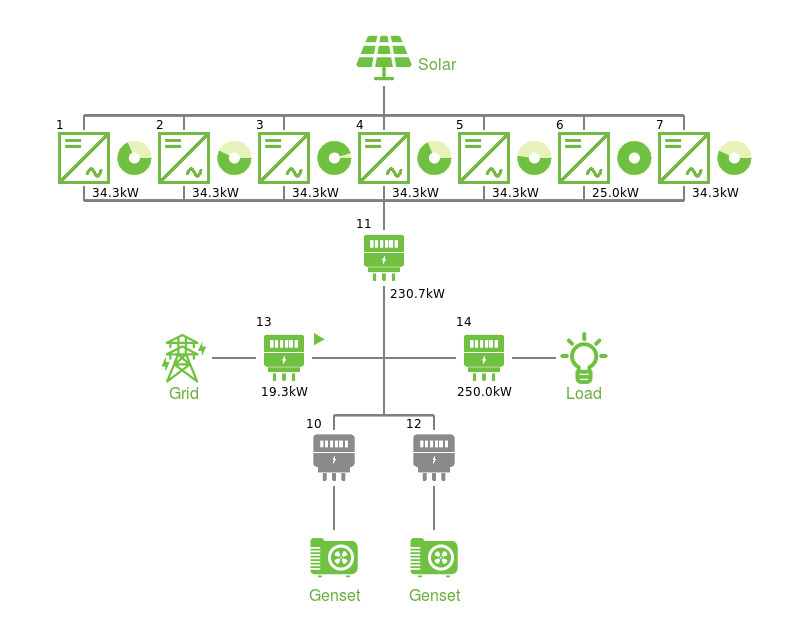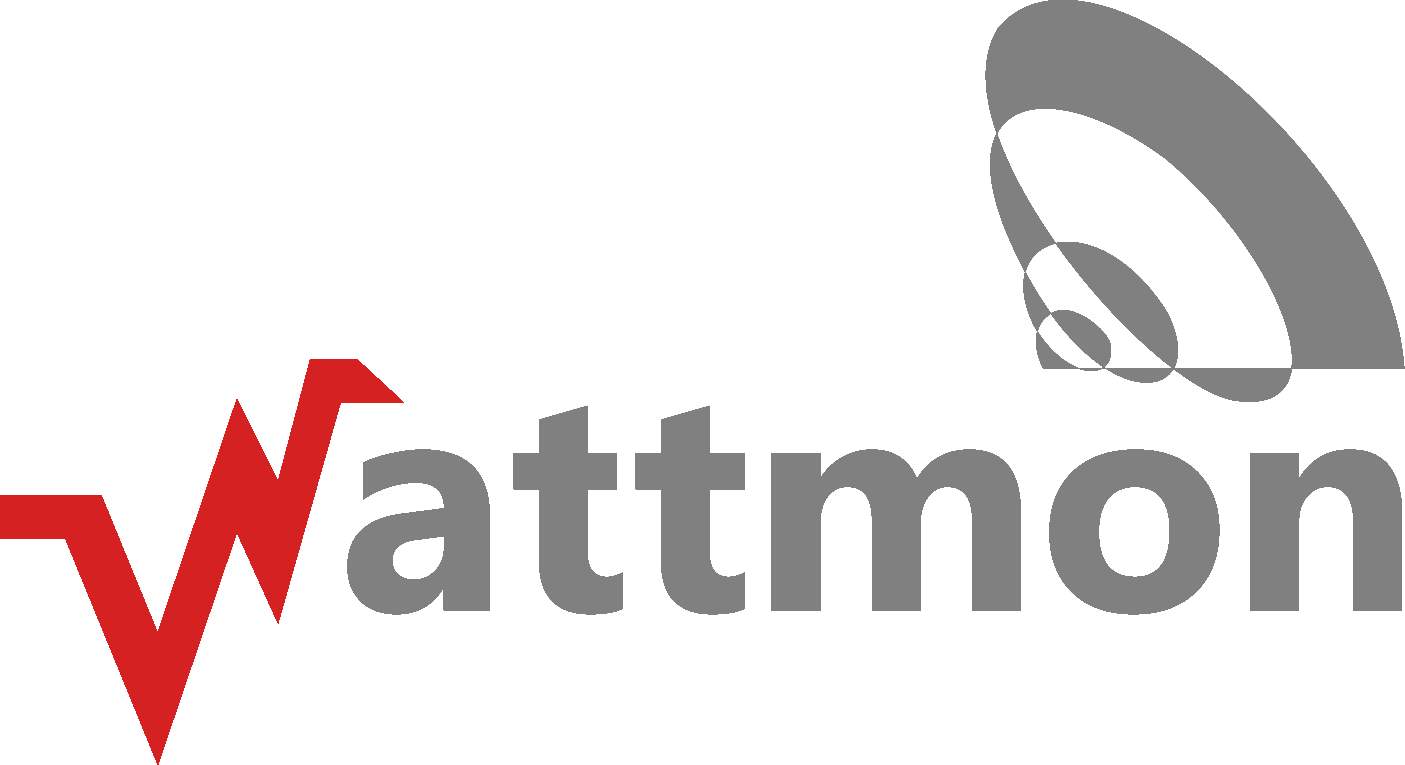Want more information? Browser our range of remote monitoring and control devices here:
Zero Export (ZFI)
Zero Feed-in, Zero Export, Captive consumption and ZFI are used interchangeably to denote a solar plant that generates power that is used on its premises, which means that no energy is exported through the utility connection.
How Power Limiting Works
A power meter is installed at the incomer of the building, and is used as a reference to determine the active power load on the building. This meter needs to be able to communicate with Wattmon over Modbus TCP or Modbus RTU. Wattmon is connected to both the power meter and the inverters. It will regularly poll the power meter to determine the live active power. As it reaches a threshold value that can be set by the user, it will ramp down the output power on the inverters using power control commands via the Modbus protocol. This will effectively limit the amount of generation dynamically so that exporting of power does not happen.
For a quick introduction to power control, see the Power Control Concepts link at the right of the page.
For a quick introduction to power control, see the Power Control Concepts link at the right of the page.
Visual User Interface
Wattmon display live performance information through a dynamically generated dashboard.

Figure shows 7 inverters and 5 energy meters. Three of the meters are active.
From this diagram one can see at a glance that the zero feed in system is working, import power is low and solar generation is uniform.

Figure shows 7 inverters and 5 energy meters. Three of the meters are active.
From this diagram one can see at a glance that the zero feed in system is working, import power is low and solar generation is uniform.
Algorithm
The power control can be described by the following pseudocode:
The set points are kilowatt values that are entered into the power control configuration page. The low and high values allow a type of hysteresis to happen as smaller building load fluctuations occur. For smaller solar plants with relatively stable loads, these values can be closer to 0 (no import or export) such a 1 and 2. A low value of 1 would mean that power should never go below 1kW of import. A high value of 2 means that ideally power should never go above 2kW, and if it does, the active generation on inverters will be increased if possible.
Read Active Power on Grid Meter as pwr
Is pwr > High Setpoint?
If yes, calculate the amount of power to increase in percent
and send command
Is pwr < Low Setpoint?
If yes, calculate the amount of power to reduce in percent
and send the command to the inverters.
The set points are kilowatt values that are entered into the power control configuration page. The low and high values allow a type of hysteresis to happen as smaller building load fluctuations occur. For smaller solar plants with relatively stable loads, these values can be closer to 0 (no import or export) such a 1 and 2. A low value of 1 would mean that power should never go below 1kW of import. A high value of 2 means that ideally power should never go above 2kW, and if it does, the active generation on inverters will be increased if possible.


